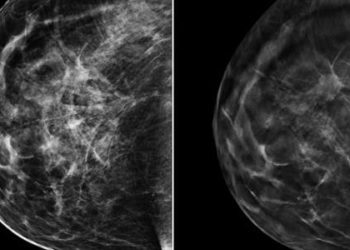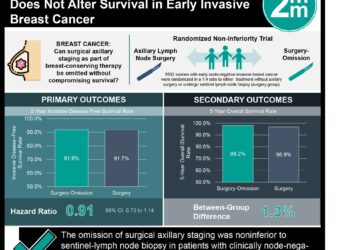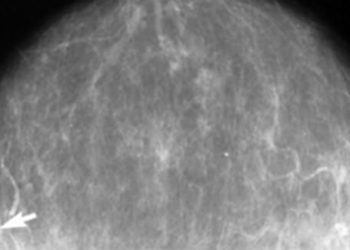Tamoxifen decreases recurrence rates at 25 years in lymph node-negative estrogen-receptor-positive and Erb-B2 Receptor Tyrosine Kinase 2-negative breast cancer
1. Tamoxifen reduced the long-term risk of breast cancer metastasis or recurrence and improved survival, especially in large, low-grade progesterone receptor-positive, or Ki-67-positive patients, compared to no tamoxifen treatment.
Evidence Rating Level: 1 (Excellent)
Study Rundown: Breast cancer is the most common cancer for women. Estrogen-receptor (ER)-positive breast cancer treatment currently involves adjuvant endocrine (tamoxifen) therapy to reduce risk and improve survival, but this benefit is only observed in half of patients. Indeed, a quarter of patients with ER-positive tumors still develop metastasis and eventually die of breast cancer. The risk of metastasis or death due to breast cancer is higher in ER-positive breast cancer patients than ER-negative. This study seeks to identify the long-term risk of N0 ER-positive/ERBB2-negative breast cancer clinical markers (tumor size, tumor grade, progesterone receptor (PR) status, and Ki-67 status) on distant breast cancer recurrence and survival. 25-year follow-up cancer data from the Stockholm Breast Cancer Study Group’s randomized clinical trial was used to compare tamoxifen-treated individuals versus control to assess for long-term cancer recurrence and survival. Results showed that small tumors had less disease recurrence than larger tumors and that low-grade tumors had less recurrence than higher grade tumors, but that PR status and Ki-67 status did not affect recurrence rates. Tamoxifen reduced the 25-year risk of disease recurrence in patients with large, but not small, and low-grade, but not high-grade tumors, and PR-positive, but not PR-negative patients, and Ki-67-positive patients, compared to no tamoxifen treatment. The results were similar for breast-cancer survival rates. One limitation of this study is that clinical recommendations changed in the 25 years during which the trial followed participants, namely the introduction of aromatase-inhibitors and the updates to tamoxifen dose and duration of use. Immunohistochemical markers may not be entirely accurate, leading to some potential misclassification of eligibility when identifying ER-positive/ERBB2-negative breast cancer. Additionally, the size of this study was limited to half of the original sample since it excluded half of participants who did not have available molecular analysis. However, a strength of this study was the legally mandated updating of the database, leading to a large potential data pool sufficient for these statistics.
Click to read the study in JAMA Network Open
Click to read an accompanying editorial in JAMA Network Open
Relevant Reading: Tamoxifen for prevention of breast cancer: extended long-term follow-up of the IBIS-I breast cancer prevention trial
In-Depth [randomized controlled trial]: This study analyzed previous data from the Stockholm Breast Cancer Study Group’s randomized clinical trial. N0 breast cancer patients with tumors <30 mm (n=1780) were randomized to tamoxifen therapy or a no tamoxifen control group at onset and again 2 years into the study in if their cancer had not yet recurred. 25-year follow-up data on cancer survival status were accessed via Sweden’s mandated Cancer Registry. Molecular analysis was possible for a subset of patients (n=808) found to be representative of the whole cohort (78% ER-positive in cohort vs 80% ER-positive in full sample). 565 ER-positive/ERBB2-negative breast cancer patients were identified as eligible for this study (mean age = 62.0±5.3 years). Of this sample, 30.0% had <11 mm (T1a/b) tumors, 52.2% had 11-20mm (T1c) tumors, and 17.7% had >20mm (T2) tumors; 23.0% had grade 1 tumors, 64.8% had grade 2 tumors, and 12.2% had grade 3 tumors. Age, period of primary breast cancer diagnosis, tumor size, tumor grade, PR status, and Ki-67 status were balanced between study groups. Small T1a/b tumors had improved disease recurrence-free interval (88%, 95%CI = 80%-93%; HR = 0.31, 95%CI = 0.17-0.55) compared to larger tumors (76%, 95%CI = 70%-81%, HR = 0.58, 95%CI = 0.38-0.88 for T1c; 63%, 95%CI = 50%-73% for T2; P < .001). Low-grade tumors had improved recurrence-free time (81%, 95%CI = 70%-88%, HR = 0.48; 95%CI = 0.24-0.95 for grade 1) compared to higher grade tumors (77%, 95%CI = 71%-81% for grade 2; 65%, 95%CI = 52%-76% for grade 3; log-rank P = .02). PR status and Ki-67 status did not significantly alter the distant recurrent time of patients. Tamoxifen reduced the long-term risk of disease recurrence in patients with T1c (HR = 0.53, 95%CI =0.32-0.89) or T2 tumors (HR = 0.34, 95%CI = 0.16-0.73) or grade 1 (HR = 0.24, 95%CI = 0.07-0.82) or grade 2 tumors (HR = 0.50, 95%CI = 0.31-0.80) compared to no tamoxifen treatment, but not small or grade 3 tumors. Tamoxifen reduced risk of disease recurrence compared to the no tamoxifen control group in PR-positive patients (HR = 0.38, 95%CI = 0.24-0.62), but not in PR-negative patients. Tamoxifen reduced the risk of recurrence compared to the control group for Ki-67-positive patients (HR = 0.39, 95%CI = 0.17-0.92 for high Ki-67; HR = 0.45, 95%CI = 0.29-0.71 for low Ki-67). Survival outcomes were best for patients with small tumors that received tamoxifen (86%), then large tumors that received tamoxifen (79%), and finally were worst for patients with any-sized tumors who did not receive tamoxifen (69% for T1c and 46% for T2; P < .001). Similar results were found for all statistical comparisons for breast-cancer survival rates.
Image: PD
©2021 2 Minute Medicine, Inc. All rights reserved. No works may be reproduced without expressed written consent from 2 Minute Medicine, Inc. Inquire about licensing here. No article should be construed as medical advice and is not intended as such by the authors or by 2 Minute Medicine, Inc.





![Active smoking cessation intervention may provide tangible results [Project CLIQ]](https://www.2minutemedicine.com/wp-content/uploads/2014/12/smoking-e1418644951268-75x75.jpg)

